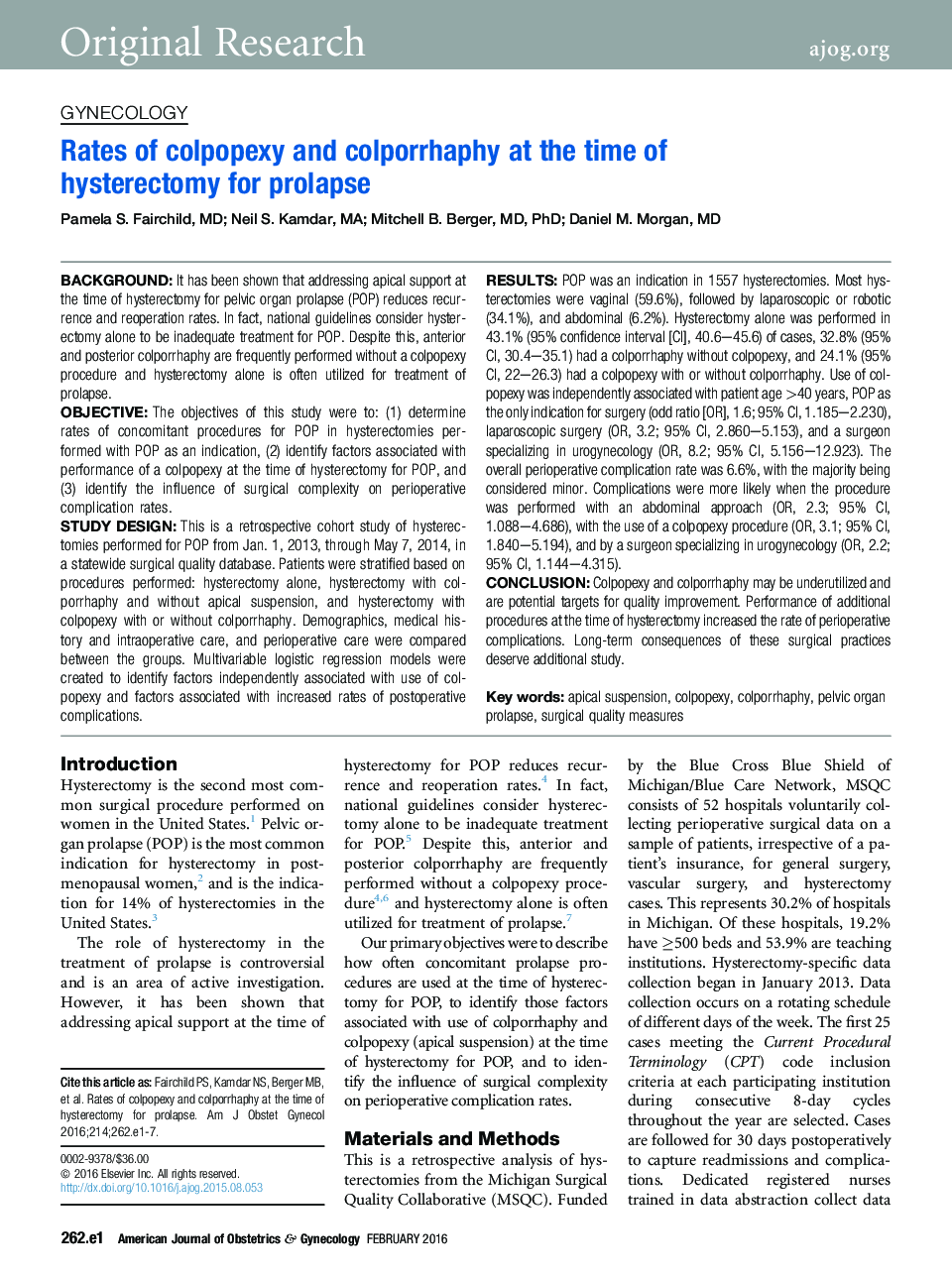| کد مقاله | کد نشریه | سال انتشار | مقاله انگلیسی | نسخه تمام متن |
|---|---|---|---|---|
| 6144986 | 1594895 | 2016 | 7 صفحه PDF | دانلود رایگان |
BackgroundIt has been shown that addressing apical support at the time of hysterectomy for pelvic organ prolapse (POP) reduces recurrence and reoperation rates. In fact, national guidelines consider hysterectomy alone to be inadequate treatment for POP. Despite this, anterior and posterior colporrhaphy are frequently performed without a colpopexy procedure and hysterectomy alone is often utilized for treatment of prolapse.ObjectiveThe objectives of this study were to: (1) determine rates of concomitant procedures for POP in hysterectomies performed with POP as an indication, (2) identify factors associated with performance of a colpopexy at the time of hysterectomy for POP, and (3) identify the influence of surgical complexity on perioperative complication rates.Study DesignThis is a retrospective cohort study of hysterectomies performed for POP from Jan. 1, 2013, through May 7, 2014, in a statewide surgical quality database. Patients were stratified based on procedures performed: hysterectomy alone, hysterectomy with colporrhaphy and without apical suspension, and hysterectomy with colpopexy with or without colporrhaphy. Demographics, medical history and intraoperative care, and perioperative care were compared between the groups. Multivariable logistic regression models were created to identify factors independently associated with use of colpopexy and factors associated with increased rates of postoperative complications.ResultsPOP was an indication in 1557 hysterectomies. Most hysterectomies were vaginal (59.6%), followed by laparoscopic or robotic (34.1%), and abdominal (6.2%). Hysterectomy alone was performed in 43.1% (95% confidence interval [CI], 40.6-45.6) of cases, 32.8% (95% CI, 30.4-35.1) had a colporrhaphy without colpopexy, and 24.1% (95% CI, 22-26.3) had a colpopexy with or without colporrhaphy. Use of colpopexy was independently associated with patient age >40 years, POP as the only indication for surgery (odd ratio [OR], 1.6; 95% CI, 1.185-2.230), laparoscopic surgery (OR, 3.2; 95% CI, 2.860-5.153), and a surgeon specializing in urogynecology (OR, 8.2; 95% CI, 5.156-12.923). The overall perioperative complication rate was 6.6%, with the majority being considered minor. Complications were more likely when the procedure was performed with an abdominal approach (OR, 2.3; 95% CI, 1.088-4.686), with the use of a colpopexy procedure (OR, 3.1; 95% CI, 1.840-5.194), and by a surgeon specializing in urogynecology (OR, 2.2; 95% CI, 1.144-4.315).ConclusionColpopexy and colporrhaphy may be underutilized and are potential targets for quality improvement. Performance of additional procedures at the time of hysterectomy increased the rate of perioperative complications. Long-term consequences of these surgical practices deserve additional study.
Journal: American Journal of Obstetrics and Gynecology - Volume 214, Issue 2, February 2016, Pages 262.e1-262.e7
